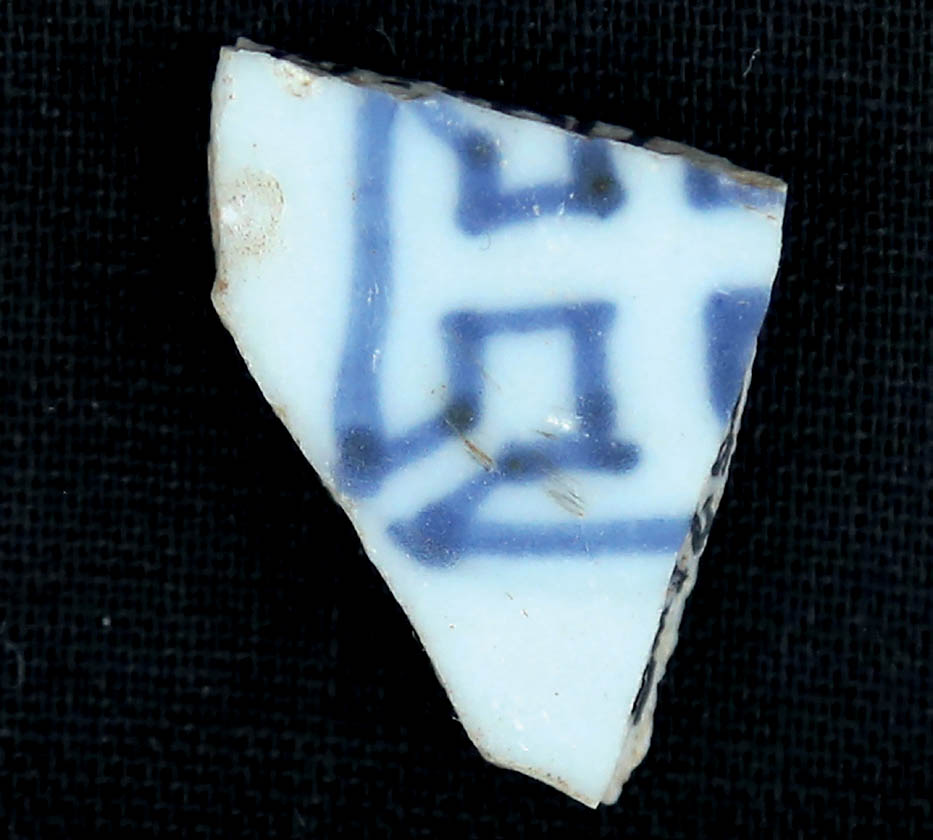Blue-and-white porcelain on Shangchuan Island: Chinese-Portuguese trade during the Ming dynasty
In 2016, the Guangdong Provincial Research Institute of Cultural Relics and Archaeology conducted a series of archaeological excavations and surveys on Shangchuan Island (fig.1). The island, measuring 156.7 square kilometers, is one of the largest islands in the Pearl River Delta. It lies on the southern side of Guanghai Bay, about 9 kilometers off the south coast of Guangdong Province. Shangchuan Island is rich in natural harbors and has served as an important navigation mark for the maritime route since the Song dynasty. Cultural remains on the island can be traced as far back as the pre-Qin period. Our excavation carried out in 2016 was centered on Dazhou Bay; it unearthed a large number of blue-and-white porcelain pieces, the majority of which are export porcelain related to Portuguese trading activities along China’s southeastern coast during the Ming dynasty (1368-1644 CE).
These pottery sherds are fragments of bowls or plates. Features of the glaze and the paste, as well as the production technique, indicate these ceramics are products of Jingdezhen. Some of the sherds are inscribed with Chinese characters, including Da Ming Nian Zao 大明年製 [Produced during the years of the Great Ming] and Jia Jing Nian Zhi 嘉靖年製 [Made during the Jiajing reign], helping to date these remains to the 16th century. Most sherds are decorated with traditional Chinese patterns, such as flowers, clouds, and phoenix. Intriguingly, one piece of blue-and-white porcelain is painted with the Order of Christ Cross (fig.2), the emblem of the historical Portuguese Order of Christ, thus testifying to the Portuguese and Catholic presence on the island. The discovery suggests that Shangchuan Island served as a transitional trading post for the Chinese-Portuguese trade before the Portuguese took Macao as their major settlement in 1557. After controlling the Malacca Strait, the Portuguese sailed through Southeast Asia to China with the help of the monsoon wind, seeking to establish connections with the Ming court. The Portuguese delegation paid their first official visit to China in 1517, followed by increasing trading and construction activities along the coast.

Fig. 2: Porcelain sherd decorated with Christ Cross, excavated from Shangchuan Island, Guangdong Province. Courtesy of Guangdong Provincial Research Institute of Cultural Relics and Archaeology.
The blue-and-white porcelains were retrieved from a site near a chapel attached to St. Francis Xavier’s cemetery. St. Francis Xavier, a Catholic missionary known for his extensive travels in Asia, arrived at Shangchuan Island in 1552, but died soon later in the same year. After St. Francis Xavier's visit, Shangchuan island not only acted as a Chinese-Portuguese trading stronghold, but also became a bridge for the religious and cultural exchanges. The large quantity of recovered blue-and-white porcelain, and the Christ Cross found on the sherds, is an embodiment of the trading and religious network connecting the East and the West. In 1639, the Jesuits in Macau built a tomb for the saint to mark the original burial site after the body was taken to Goa, the then capital of Portuguese India. From 1701 to 1864, Catholic activities on Shangchuan Island were largely restricted or even banned, and priests were expelled. After 1864, French Catholicism arrived on the island and continued St. Francis Xavier’s mission.1 The current chapel was sponsored by Bishop Guillemin between 1867 and 1869. Another Catholic Church in the Sunday Village south of St. Francis Xavier’s chapel and a hilltop commercial monument showcase the later wave of Catholic presence.
XIAO Dashun is an archaeologist at the Guangdong Provincial Research Institute of Cultural Relics and Archaeology 37988181@qq.com